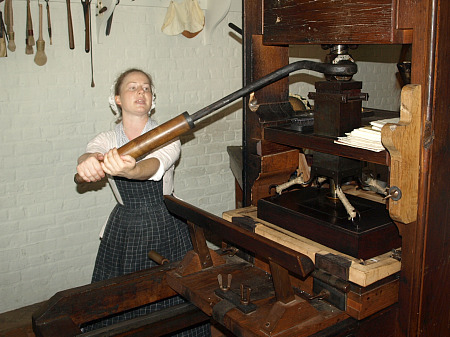By Geoffrey Cowan and David Westphal
Geoffrey Cowan is university professor at the University of Southern California and dean emeritus of the Annenberg School for Communication and Journalism. David Westphal is a senior fellow at USC’s Center on Communication Leadership and Policy and former Washington bureau chief for McClatchy Newspapers.
A mythology about the relationship between American government and the news business is again making the rounds, and it needs a corrective jolt. The myth is that the commercial press in this country stands wholly independent of governmental sustenance. Here’s the jolt: There’s never been a time in U.S. history when government dollars weren’t propping up the news business. This year, federal, state and local governments will spend well over $1 billion to support commercial news publishers through tax breaks, postal subsidies and the printing of public notices. And the amount used to be much higher.
This topic is back in the news because of the rapid economic decline of newspapers, news magazines and many broadcast outlets. Amid deepening concern about the impact on our democracy, some are calling on the government to get involved. Leonard Downie and Michael Schudson were among the latest, urging limited government aid to support the cause of news and information. The Federal Trade Commission is among the federal agencies wading in, scheduling discussions Dec. 1-2 to gauge whether government intervention is needed.
The truth is that American government and the news business have always been joined at the hip, and not just through the government’s copyright protections, restrictions on anti-competitive practices and regulation of the public airwaves. It’s also through the infusion of tax dollars.
The Postal Service’s subsidy of mailing costs for newspapers and magazines, which dates back to colonial America and the Postal Act of 1792, is often raised as Exhibit A. Less well known is just how large this subsidy was – and how much it has shrunk. As recently as the late 1960s, the government was forgiving roughly three-fourths of print publications’ periodical mailing expenses, at a cost of about $400 million annually (or, adjusted for inflation, about $2 billion today). Much of that disappeared with the Postal Reorganization Act of 1970 and in subsequent cutbacks. But the Post Office still discounts the postage cost of periodicals by about $270 million a year.
Postal subsidies, though, are just the start of the story. Federal and state governments forego about $890 million a year on income and sales tax breaks to the newspaper industry, most of it at the state level. The actual figure is probably much higher because many states don’t report tax expenditure details.
Another major form of government support comes through public-notice requirements, which also have their roots in colonial America. These laws require cities, counties and school districts, along with state and federal agencies, to buy advertising space in newspapers to disclose a range of government actions – such as plans for a new school. Take a look at the Wall Street Journal, for example, and you’ll usually find a page or more of federally paid and mandated ads – in impossibly small print — announcing property seizures. Those are public notices, and nationwide they bring in hundreds of millions of dollars in revenue.
But all three of these categories are shrinking. For example, legislation has been introduced in 40 states to move public notices to the Web, and the Department of Justice has already announced it will shift property-forfeiture notices from newspapers to its own Web site. The impact would be another blow to newspapers, especially small ones: In 2000, the National Newspaper Association estimated that public-notice billings accounted for 5-10 percent of newspaper revenue.
Postal subsidies, tax breaks and public-notice requirements only begin to describe the ways governments at every level have supported the American news industry. Municipalities provide newspapers with enormous sales and marketing benefits by allowing vendor boxes on public sidewalks at little or no cost to the newspaper companies. Drug advertising regulations by the Food and Drug Administration have been a boon to magazine publishers because they require TV ads to be accompanied by more specific disclosure, and magazines are one of the approved outlets. Commercial broadcasting has also benefited mightily, via the free use of government-licensed airwaves.
After backing the news industry for more than 200 years, the government should assess how it can be most helpful now, when the future of news and information is so uncertain. As it debates possible forms of support, the government should consider these principles:
First and foremost, do no harm. A cycle of powerful innovation is under way. To the extent possible, government should avoid retarding the emergence of new models of newsgathering.
Second, the government should help promote innovation, as it did when the Department of Defense funded the research that created the Internet or when NASA funded the creation of satellites that made cable television and direct TV possible.
Third, for commercial media, government-supported mechanisms that are content neutral — such as copyright protections, postal subsidies and taxes — are preferable to those that call upon the government to fund specific news outlets, publications or programs.
However policymakers proceed, they should do so based on facts rather than myth. The government has always supported the commercial news business. It does so today; and unless the government takes affirmative action, the level of support is almost certain to decline at this important time in the history of journalism.









